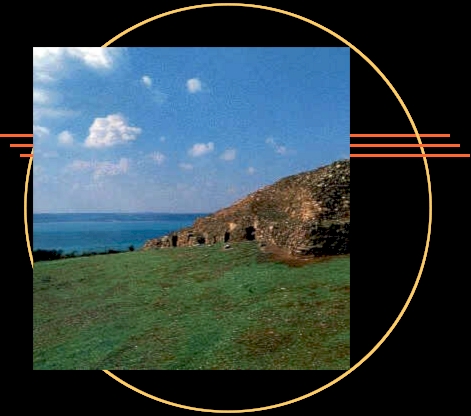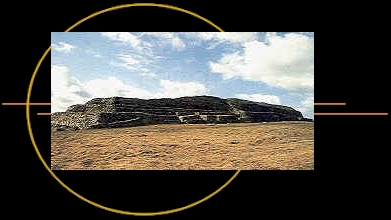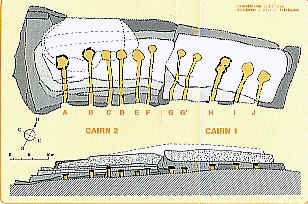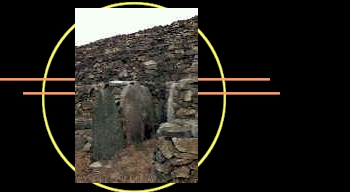![]()
![]()
I went to Barnenez some time ago. This is why I want to testify here of the emotion felt in front of this imposing site which however remains to some extent confidential.
The cairn of Barnenez is close to Morlaix, Nord-Finistère, in the village of Plouézoc' h , Brittany , France . It occupies the node of a coastal projecting ledge. But one does not discover the cairn from the start: the entry goes through a building very skilfully built underground , prolonged by a corridor then a staircase gives access to the site .There is a perfume of initiatory voyage in this short passage...

The place is extremely peaceful ; it is often so on megalithic sites . The massive silhouette of the monument subjugates.
History:
Although the existence of the cairn was known since a very long time, it is only in 1955, following the opening of a macadamization material quarry at its north-western end, that the intern megalithic structures were found. It should be noted that another cairn, of smaller dimensions, located a little more at north, was completely destroyed in 1954 by work of quarry and it is really a great chance to have been able to save what remains one of oldest constructions in the world.
 |
Overall view of the cairn: the monument is 72 meters long for 20 to 25 meters larg.It consists of 2 successive cairns , cairn 2 resting on the cairn 1, the addition of the cairn 2 was done at the western end, on an increasing slope, which made necessary the construction of facing walls which give this step-aspect. |
Thus here is a very complex construction including 11 chambered-tombs . Those are 7 to 12 m long . Their cover is made of granite tables , sometimes jointed, sometimes isolated supplemented by smaller stones corbelling out .Tomb H is most complex, it is equipped, of a hall preceeding the room thus separated by 2 pillars and covered by an enormous table resting on dry masonry. |
 |
Structure:
|
The materials used in the construction are of two kinds:
|
| The dolerite was almost exclusively used for Cairn 1, whereas the granite was for Cairn 2, this difference of material well highlights the juxtaposition of the cairns.To produce 1cubic- meter of dry masonry, one needs 1500 kg of rock, that is to say 4 working days for a workman; one can thus deduce that it will have taken a few weeks for 300 men to raise the heart of Cairn 1. It was perfectly realizable for a community of a few hundreds of people, as were the human communities of this period. |
|
|
|
Northern side : back of the cairn ,rooms C & A and dolmen B | |
Cairn 2 : Tomb B entrance |
 |
|
Dating:
Carbon-14 studies were carried out on the fragments of charcoal found hidden in the fillings of the burials and they made it possible to conclude that Cairn 1 was built at least towards 4350 years before our era if not several centuries before, Cairn 2 was built at the latest 4100 years before our era. Which makes the Great Cairn of Barnenez one of the oldest monuments in the world arrived to us practically intact.
![]()
Thanks to Mr Pierre-Roland Giot who is the specialist of this site. Its booklets enabled me to give this testimony.
| Back to Summary |  |
Next : Megalithic Brittany |
| © Odile Prigent - Paleologos 1998-2004 | ||